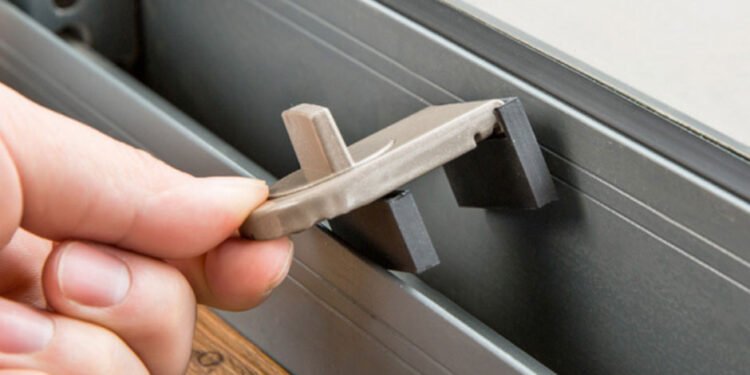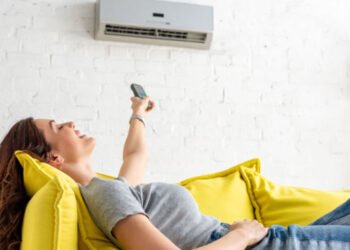Sliding glass doors are a beautiful addition to any home, providing natural light and easy access to outdoor spaces. However, their aesthetic appeal can also be a point of vulnerability for home security. Unlike traditional doors, sliding glass doors often have weaker locking mechanisms, making them a target for burglars. This is why investing in advanced locking solutions and implementing strategic security measures is essential to protect your home and loved ones.
In this guide, we’ll explore practical tips for securing sliding glass doors, highlight the importance of using a robust sliding door lock, and recommend advanced locking solutions to enhance your home security.
1.Understand the Vulnerabilities of Sliding Glass Doors
Sliding glass doors are inherently different from standard doors due to their construction and mechanism. Common vulnerabilities include:
- Weak Locks: Traditional sliding door locks are often inadequate, using simple latches that can be easily jiggled or forced open.
- Exposed Tracks: Tracks can be manipulated to lift the door out of place.
- Glass Panels: Large glass panels are susceptible to breaking, though most modern sliding doors use tempered or laminated glass to mitigate this risk.
Understanding these weak points is the first step in reinforcing your sliding door security.
2.Choose High-Quality Sliding Door Locks
The sliding door lock is your first line of defense. Opting for an advanced locking mechanism can significantly improve security. Some popular options include:
Dual Bolt Locks
Dual bolt locks secure the door in two places, making it much harder to pry open. These locks are designed to resist jimmying and can withstand high levels of force.
Keyed Locks
Keyed locks add an additional layer of security by requiring a key to lock or unlock the door. They are especially useful for doors that serve as primary entrances.
Smart Locks
Smart sliding door locks provide convenience and enhanced security. These locks can be controlled via smartphone apps, allowing you to lock and unlock the door remotely. Many models also feature tamper alerts and activity monitoring.
Sliding Bar Locks
A sliding bar lock is a cost-effective solution that physically blocks the door from sliding. This type of lock can be used as a secondary security measure in addition to other locking mechanisms.
3.Reinforce the Sliding Door Frame
The door frame plays a crucial role in security. Even the most advanced sliding door lock can be compromised if the frame is weak. Consider these reinforcement strategies:
- Install a Door Security Bar: Security bars prevent the door from being opened even if the lock is compromised. Look for adjustable models that fit snugly into the door track.
- Use Anti-Lift Devices: Anti-lift devices prevent burglars from lifting the door out of its track. These are typically inexpensive and easy to install.
- Reinforce Screws and Tracks: Use longer screws and reinforce the tracks to prevent forced entry.
4.Upgrade to Shatterproof Glass
While locks and frames are critical, the glass itself is another point of vulnerability. Upgrading to shatterproof or impact-resistant glass can make it nearly impossible for intruders to break through the door. Options include:
- Laminated Glass: This type of glass has a plastic layer sandwiched between two panes, holding the glass together even if it breaks.
- Tempered Glass: Tempered glass is stronger than standard glass and, if shattered, breaks into small, less dangerous pieces.
- Security Film: Applying a security film to existing glass can reinforce it and make it more resistant to breakage.
5.Add Security Sensors and Alarms
Modern security systems can further enhance the safety of sliding glass doors. Sensors and alarms can alert you to any tampering or forced entry attempts. Key options include:
Door Contact Sensors
These sensors detect when the door is opened or closed and can be integrated into your home security system.
Glass Break Sensors
Glass break sensors are designed to detect the sound or vibration of breaking glass. These sensors can trigger alarms, deterring intruders.
Motion Detectors
Install motion detectors near sliding glass doors to monitor activity in the area. When paired with security cameras, they can provide valuable evidence in case of an attempted break-in.
6.Enhance Visibility with Lighting and Cameras
Visibility is a critical factor in deterring burglars. Sliding glass doors are often located at the back of the house, where visibility is limited. Here’s how to address this issue:
- Install Motion-Activated Lights: Motion-activated lights illuminate the area around your sliding doors, deterring potential intruders.
- Use Security Cameras: Cameras with motion detection and night vision capabilities can monitor activity near the doors and provide real-time alerts to your smartphone.
7.Secure the Door Track
The door track is another potential weak point. Intruders can manipulate the track to lift the door off its frame. Take these steps to secure the track:
- Clean and Maintain Tracks: Dirt and debris can cause the door to move less smoothly, increasing wear and tear.
- Install Track Spacers: Track spacers reduce the gap between the door and the track, preventing it from being lifted.
- Use Track Locks: Track locks are designed to secure the door within its track, making it more difficult to tamper with.
8.Integrate Sliding Doors into Your Smart Home System
For a high-tech approach to security, integrate your sliding door locks and sensors into your smart home system. Features may include:
- Remote Locking and Unlocking: Control the lock from anywhere using your smartphone.
- Custom Alerts: Receive notifications when the door is accessed.
- Automated Locking: Set schedules to lock the door automatically at specific times.
Smart home integration not only enhances security but also provides peace of mind when you’re away from home.
9.Don’t Forget About Child Safety
If you have young children at home, securing sliding glass doors takes on an added layer of importance. Look for locks and security measures that are child-proof. Options include:
- Childproof Sliding Door Locks: These locks are designed to be out of reach of small children.
- Secondary Locks: Install secondary locks at a height that is difficult for children to access.
10.Regular Maintenance and Inspections
Finally, regular maintenance is essential to ensure that all security measures remain effective. Here’s what to include in your routine:
- Check Locks: Ensure all locks are functioning correctly and replace any that show signs of wear.
- Inspect Tracks and Frames: Look for signs of damage or wear and address them promptly.
- Test Sensors and Alarms: Regularly test all security devices to ensure they are operational.
Conclusion
Securing sliding glass doors requires a combination of advanced locking solutions, physical reinforcements, and modern security technology. By choosing the right sliding door lock, reinforcing the door frame and track, and integrating smart home features, you can transform this potential vulnerability into a robust barrier against intruders.
Take the time to assess your home’s specific needs and implement the tips outlined in this guide. Whether you’re upgrading to shatterproof glass, installing motion-activated lights, or investing in a smart lock, these measures will give you peace of mind and protect your home and loved ones.
If you’re ready to invest in advanced sliding door locks and other security solutions, start by exploring the latest options available. A secure home starts with smart decisions—don’t wait until it’s too late.












